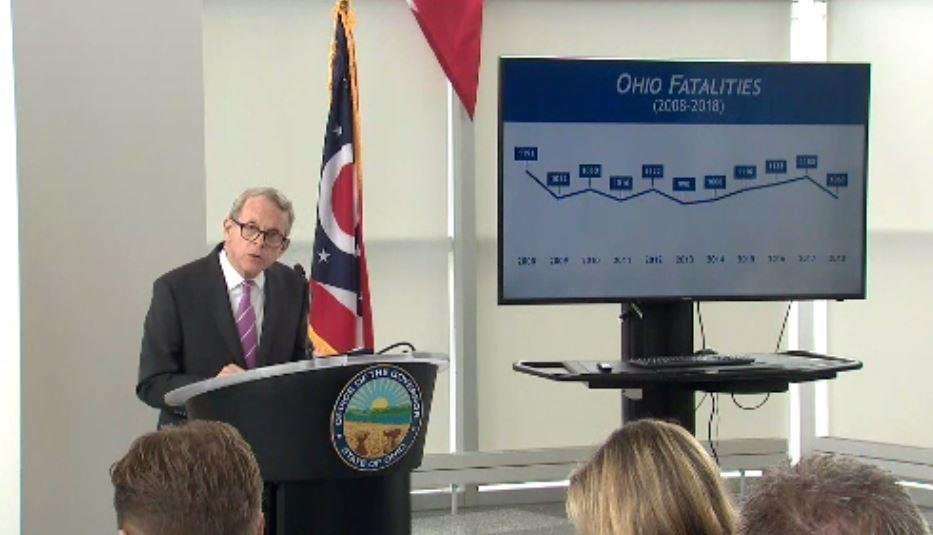Major changes could be coming to the roads, as Ohio’s governor looks to get tougher on distracted driving.
Since 2013, the state says there have been 80,000 distracted driving crashes in Ohio and 258 distracted driving deaths.
“We should not think of distracted driving crashes as accidents. Distracted driving as we know, is truly a choice,” said Governor Mike DeWine.
DeWine says it’s time to change the culture, and the law, when it comes to distracted driving.
“Distracted driving must become as culturally unacceptable as drunk driving is today,” he said.
Thursday, he received the report from the State Task Force on Distracted Driving.
The report includes these Key Findings:
- Ohio currently has two statewide distracted driving laws that are not easily enforced.
- Distracted driving penalties are too low to change behavior. Penalties should be proportionate to the potential harm.
Ohio passed a new law in October making it easier for police to ticket drivers for distracted driving.
The law turned it into a secondary offense meaning police who pull over motorists for a traffic violation could give them an additional ticket if any distracted driving contributed to the offense.
The punishment for a distracted-driving offense is either $100 or a distracted-driving safety course. The fine would be dropped if the driver proves completion of the online safety course.
Penalties for drunk driving are much higher, the report says, yet both behaviors similarly endanger Ohioans. It says states with primary, hands-free laws have seen reductions in traffic deaths.
“As of December 2018, a total of 15 states and the District of Columbia have a primary, hands-free law governing mobile phone use while driving. Twelve states saw an average 15 percent decrease in traffic fatality rate within two years after passing those laws. Six of these states and the District of Columbia saw a greater than 20 percent decrease in fatality rates.”
The task force wants to see these changes in Ohio Law:
- Enact one “Hands-Free” law with primary enforcement in the state of Ohio that would outlaw Ohio drivers from having physical contact with their mobile phones or other telecommunications equipment, including all tablets, iPads and smart watches.
The task force says the main benefit of this option is enforceability — making it easier for officers to see if a driver is distracted by a phone or other hand-held device:
- Increase the fines, points and penalties for distracted driving. The current fine for a distracted driving citation is $150. There are currently no points assigned to drivers older than 18.
- Increase the penalty for harm caused. Under current law, the penalty range is the same whether a distracted driver causes no harm or kills someone.
Drunk driving laws build this into the law from the start by making the offense a felony depending on whether serious injury or death results.
All of these recommendations have the endorsement of the governor. Still, it’s not clear when any of these changes could actually become law.
“It is my goal to see all of these recommendations implemented,” he said.
DeWine says each member of the Ohio General Assembly will receive a copy of the report. He calls this just the start of a potentially lifesaving conversation with lawmakers.
DeWine was joined by others Thursday, including 10TV’s Dom Tiberi. Dom lost his daughter Maria in a distracted driving accident in 2013.
Since then, Dom and his family continue to work to put an end to distracted driving through Maria’s Message. For more information, click here.
To see the report, click here.


